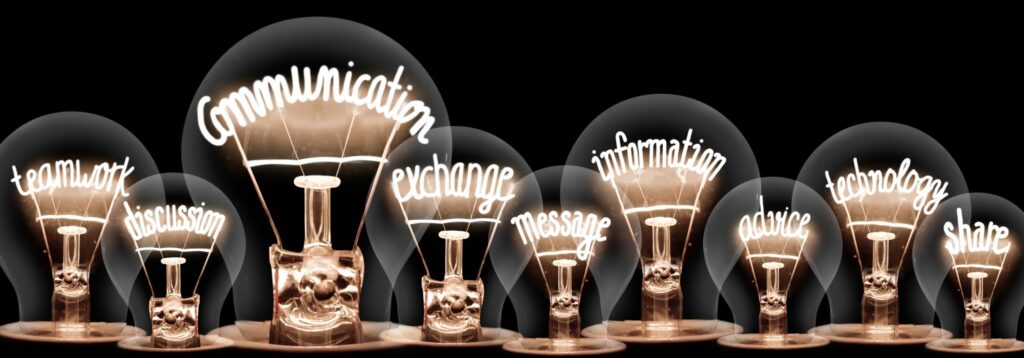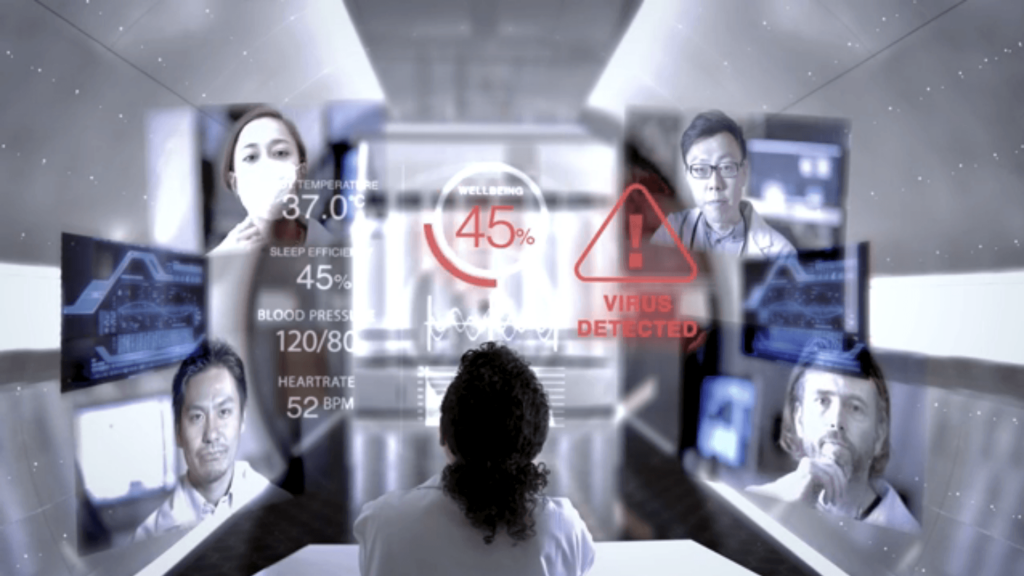Meaning of communication
Do you know what the word “communication” actually means?
The word comes from the Latin communicare: share, inform, allow to partake; to do something together, unite. This original meaning is meant to convey an activity in a social system in which people interact with one another. Significant aspects of this social activity are first of all stimulation by sending signals, and secondly participation. Something common can be derived from both of these (Latin – communio: “community”, communis: “together”).
Communication: a significant means of maintaining relationships; establishing a community
Communication will always be an important instrument in maintaining relationships as well as in establishing a community.
It is just the means of communication that change. We need only think of the process of corresponding by letter: Write a letter à Add a stamp à Send the letter. After 1-2 days (or longer) the letter arrives at the recipient. By today’s standards this is far too long, particularly in the business world. In the 21st century, communication has been significantly accelerated thanks to smarter communication tools/channels. The result: spatial and temporal independence. These methods/channels have become indispensable in the private sphere. And in the commercial world these new forms have achieved a must-have status.
Communication in the modern business world
Modern communication technologies help us to overcome spatial and temporal boundaries almost effortlessly. Firstly, costs can be drastically reduced and secondly, knowledge that is decisive for the innovative strength and productivity capacity of an organisation can be generated. Knowledge yields immense potential. Those who understand how to use this correctly will gain a future competitive edge. Because communication in an organisational context affects knowledge management.
This gives rise to the spiral model of knowledge: Socialisation – Externalisation – Combination – Internalisation. In short, the SECI model from Nonaka and Takeuchi*. The SECI model is a process of knowledge transfer in which implicit and formal knowledge is constantly being implemented within an organisation, and is being transferred between individuals, groups and organisations. But even if common understanding is to be promoted at an organisational level, this must be based on a common understanding of the individuals.
Remote communication in the service area
Systems and work processes in industry are becoming increasingly complex and require extremely comprehensive knowledge from service and maintenance personnel. In the course of product development, increasingly intelligent concepts are being developed for supporting service and maintenance personnel in complex work processes by means of a remote expert with the aid of “smart technologies” – more specifically, with mobile devices.
Problems that occur can be rapidly transferred to another location on earth using these “smart technologies” in the form of multimodal information, i.e. films, graphics, images or explanations, depending on the situation: remote communication. The interface between humans and technology creates immense added value: information/data is made available to humans in real time anywhere and without other logistical problems, as is the feedback of information/data from humans.
Effective interaction with intelligent systems
Remote communication is not only a trend of our modern industry. It allows a company’s personnel at different locations to communicate with one another and to work as a team. They use a number of tools and media such as email, chat and online collaboration tools to facilitate or optimise the process. These tools are equipped with a number of applications that have been developed and that enable extremely difficult tasks to be accomplished with ease.
Basic requirements: real time + data processing + resumability
A number of crucial issues need to be taken into account when implementing remote communication. The following minimum requirements are however key to seamless remote communication:
Real time
To create a common understanding about a topic, you need to ensure that the other person understands what you mean and that you understand what that person means. In other words: We build an understanding by following a conversation. Words are used to bring expression to your thoughts. But sometimes words alone are insufficient for this purpose. In these cases, you might need to sketch a diagram or you might need to use a different means of communication. Regardless of which communication tool you use, the following rule applies: The more often you express your thoughts, the better. To establish a mutual understanding in a short period of time, thoughts must be captured in real time.
Data processing
We need to share our thoughts with one another. This occurs not only through verbal communication, but also with the aid of documents, sketches etc. that must be able to be shared easily and in real time. The possibilities of pure text are limited when it comes to giving expression to your thoughts. You need diagrams as well. If however you are only able to compile these from already existing elements, they are limited in their ability to express something and at times also require a great deal of time to create. It is therefore important to be able to create diagrams by hand. Depending on the content of the communication, it could be necessary to refer to previous data. It is important to have easy access to the data and to analyse the saved data at a later stage.
Resumability
Resumability means that it is possible to resume or restart immediately. I think that in our communication we very often refer to other data. In addition, a single discussion does not always lead to a common understanding; multiple conversations could be required in this regard. If we resume a conversation and do not immediately recall where we left off when the last conversation was interrupted, reviewing the previous conversation could become a lengthy process, with the result that the discussion may not progress. Particularly in the case of remote communication, it is no problem to pick up from the end point of the previous communication when figures or written text is involved. By contrast, it is difficult to reproduce a hand-drawn sketch on a whiteboard. It needs to be possible to do this easily.
The SensPlus family as a communication tool
Just imagine: Being able to exchange and analyse data from field maintenance in real time, and much more. Organise work processes more efficiently in a digital manner. Add on: digital notes that can be immediately exchanged between multiple members.
Would you like to learn more? Then visit our SensPlus website.
In short: In future, people will be able to communicate with each other even more efficiently using smart technologies. In the course of 5G network implementation and virtual technologies, even more agile and flexible work processes will be possible, which will lead to a completely new way of working in many areas. How will this look in detail? What do you think?
* S. Gourlay, “The SECI model of knowledge creation: some empirical shortcomings,” 4th European Conference on Knowledge Management, Oxford, England, 18-19 September, 2003. J. L. Rice, B. Rice, “The applicability of the SECI model to multi-organisational endeavours: An integrative review,” International Journal of Organisational Behaviour, 2005.
Ecosystems – new business models: important for disruption strategies
FIDO: Across how many user accounts is your digital identity distributed?




